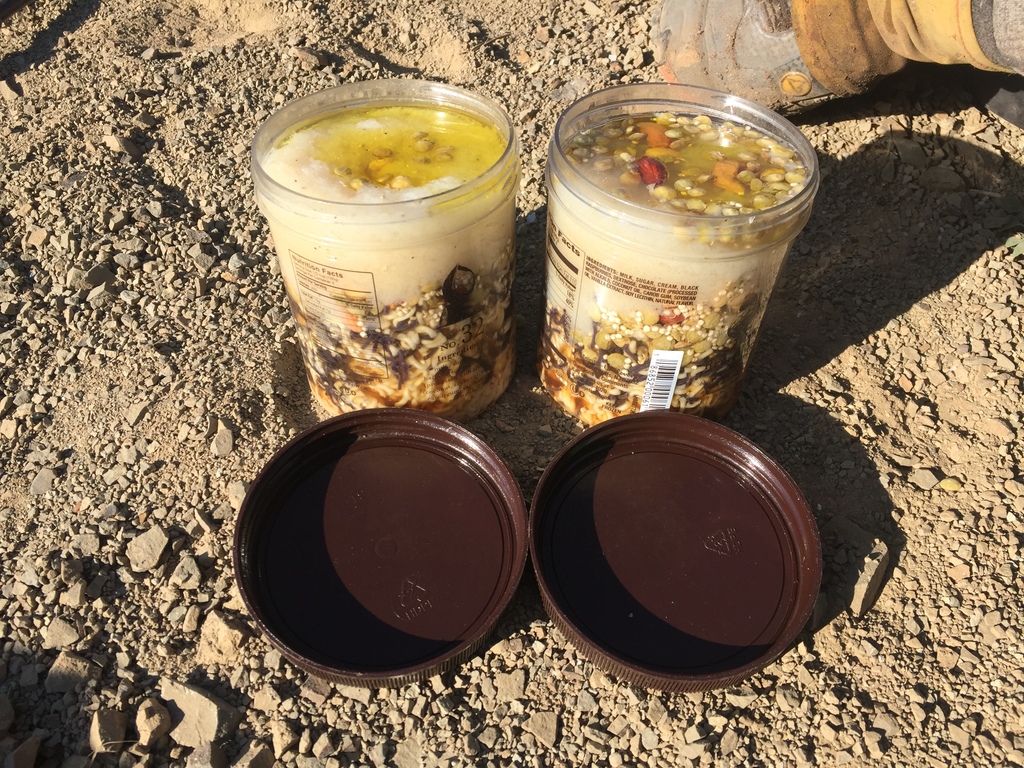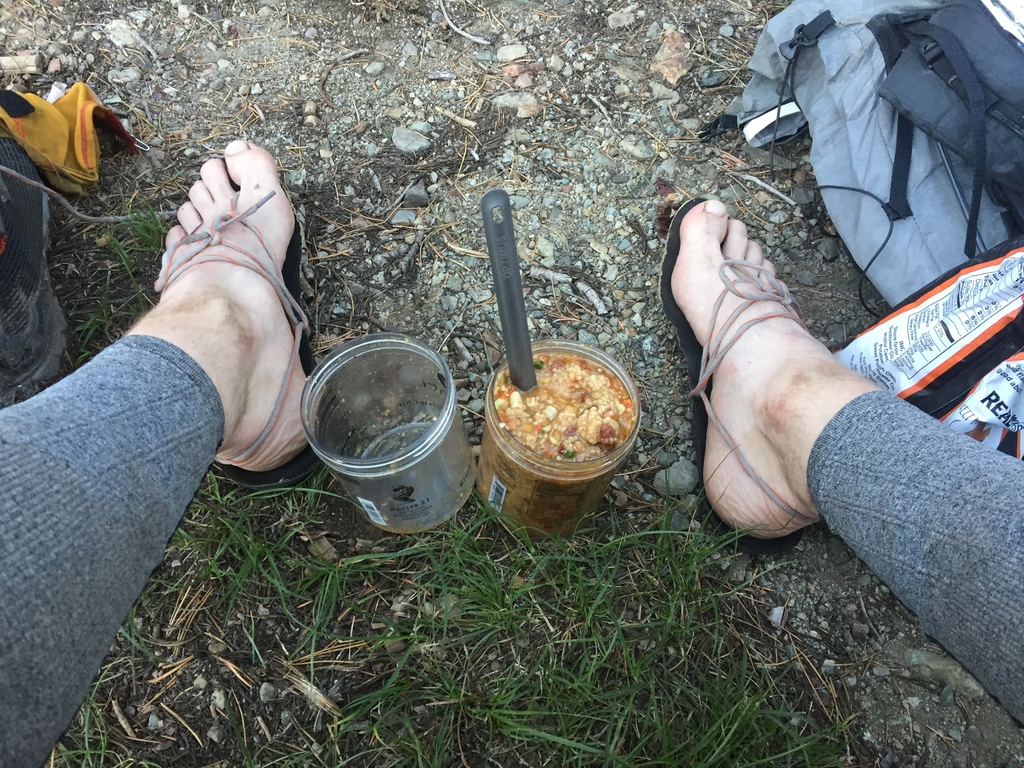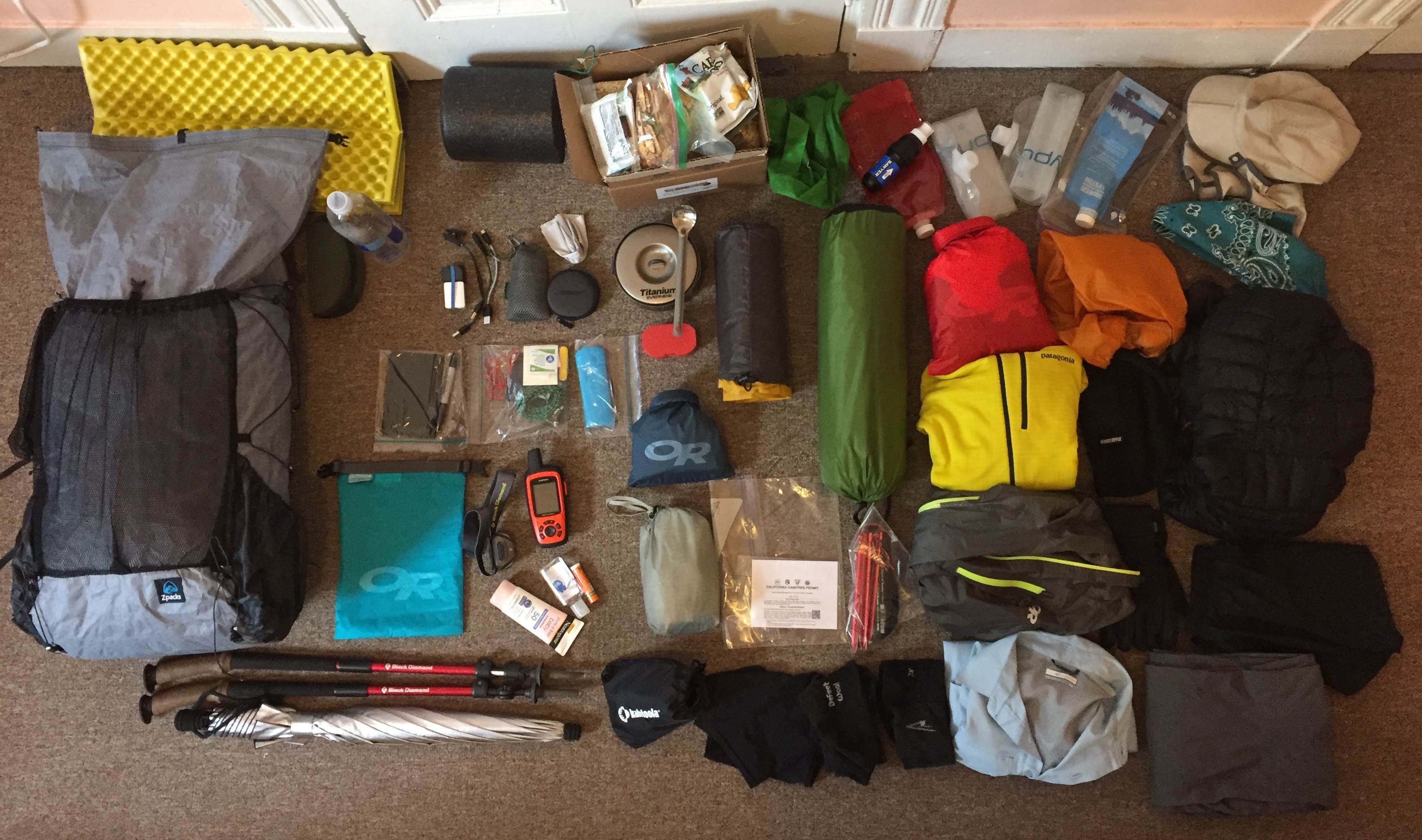Gear and Backpacking Lessons Learned from Through-Hiking the Pacific Crest Trail
Since I have been asked for multiple people, I am listing lessons I learned on the Pacific Crest Trail (PCT): things I changed, I would change, I would try, and things I would keep the same in terms of gear and backpacking techniques.
Changes I made to my approach to hiking and my gear during the PCT:
- Changed long pants for short running shorts and Patagonia Houdini wind pants (warm enough and super light).
- Switched from cooking with a stove to stove-less: I realized that I was a huge hassle to warm up food just to leave it to cool down enough to eat - with cold soaking I get to camp and can start eating right away. Additionally, I did not have to worry about finding fuel in town.
- Changed my aluminum hiking poles to carbon fiber hiking poles (Black Diamond Carbon Z) after bending my aluminum poles in a river crossing. I found the carbon fiber poles to be significantly lighter and stable enough.
- shipped my fleece home (puffy or fleece either is enough but both are over kill except for high sierras in snow; I would do it the other way around next time (see below)).
- dropped all but one stuff/compression sack (had one waterproof 11l one for emergencies to keep my sleeping bag dry (but never needed it) and used my bug net to keep all the smaller stuff together).
- started using a kevlar food bag (Ursack) after I had mice in my tent twice (but I would try to get away with smell proof bags next time because the Kevlar is heavy).
- switched to /settled on darn tough socks (really tough!).
- started using a buff to keep my neck and throat warm starting in Oregon.
- once it got colder in the north I started using a synthetic T-shirt base layer in addition to my sun shirt.
- started using a mylar ground sheet after my mattress got punctured (mylar = rescue blanked which can be bought in a lot of towns to replace a broken one).
- used calf compressions to prevent shin splints (never got them) and Achilles tendon inflammation (stopped when I got the compressions).
- took turmeric+pepper capsules every day to keep inflammation down (probably helped stop Achilles tendon inflammation).
- sent back my silk sleeping-bag liner and used only long Johns and long merino wool shirt during the night. They added enough warmth and also protected my quilt from the worst dirt and sweat.

Things I would do differently next time:
- get transition prescription glasses so I do not have to switch between glasses.
- use a bivy + tarp combo instead of my tent (lighter and faster than tent because tarp would not have been necessary for most of the trail).
- just bring a fleece hoodie (I used the Patagonia R1 but a lot of ultra light hikers I saw were using the hoodie from Melanzana) as opposed to puffy (wet fleece still keeps warm and does not overheat as quickly if used in the morning for hiking).
- leave Garmin inReach at home (I felt save all the time and would not have needed it - I mostly brought it for my family and friends but it did add a lot of extra weight and hassle keeping it charged and logging positions)
- bring lightweight camp shoes (the Huaraches made from old insoles and shoe laces - see below) for wet and cold sections (this year the High Sierra) so that my feet can be dry while making dinner.
- I would start out stove-less right away in the desert and only bring a stove in for the High Sierra if it is snowed in and cold and wet again. Otherwise I would go stove-less all the way.
- bring sun-gloves for the desert to avoid having super sticky hands from the sunscreen.

Things I would try:
- I would try a different lightweight backpack (I used the ZPacks Arc Blast) that is made from more durable fabric (while Dyneema is super strong it is pretty bad when it comes to abrasion such as when you put your pack down somewhere). A lot of hikers this year were happy with Superior Wilderness Design backpacks.
- I would try to snack less and condense my eating to a few meals in order to reduce the impact of all the sweet food on my teeth.
- I really enjoyed my La Sportiva Wildcat trail runners (I never got blisters) but I would try to find more lightweight shoes with an even wider toe box.
- I would try to use the Patagonia Sunshade fishing sun-shirt with hoodie instead of the sun shirt and the neck protection on the sun hat. The effect would be the same but I really liked the way the hoodie looked, that it protected the side of the face even better, and that it was one piece in the neck region - no need to worry about the proper alignment of the neck protection and the top of the shirt.

Things I would keep the same next time:
- use umbrella for desert hiking: with my umbrella up I could keep going through the worst mid-day heat in the desert where others were just lying around in the (rare) shade.
- 20F Enlightened Equipment quilt: I only felt cold three nights in the icy and high altitudes of the high sierra. But I suspect that this was mostly because I did not get my feet out of my cold wet shoes quickly enough (I did not have the Huaraches made from insoles and shoe laces that Nobody thought me to make)
- bring a sun-hat with protection for the neck and the side of my face. Pretty much eliminates the need for sunscreen in the face.
- bring a SPF-50 sun shirt. The sun-shirt was great for sun protection and I wore it for the entire hike (I added a synthetic base-layer later on when it got colder in the north).
- short shorts! Ventilation, quick drying, can wear long johns over them during the night and feeling the air on my legs felt like freedom. It was really hard to switch back to wearing “normal” long jeans after the hike.
- Sawyer Squeeze water filter: robust, fast (if back flushed enough) and great taste.
- One non-dirty water bottle for electrolyte tablets and the rest all dirty (drink directly out of them through the Sawyer Squeeze).
- bring a 360 camera to capture the full situation with one click. Ideally I would bring a wide angle camera but those are usually very heavy. Since the Ricoh Theta is only ~7 oz (200g) it is a very portable option for capturing wider fields of view than a smart phone.
- trash compactor bag as a water-proof bag liner.
- Guthooks app for navigation.
- Deuce of Spades trowel.
- rechargeable headlamp. Just recharge at every stop - no need to worry about buying expensive AAA batteries.
- inflatable sleeping pad NeoAir XLite. Light, warm and great for side sleepers. Slightly annoying to blow up every evening but once I learned the trick to jut lie down already while inflating it got way more comfortable.
- RAVPower 6700mAh battery pack. Most other hikers carried 10000mAh battery packs but I found the 6700mAh is sufficient even for 7 days without civilization if I keep my iPhone in airplane and battery saving mode.
- Small dual USB 5V 2.4A fast charger. Having two USB outputs really helped charge all my electronics quickly in town when wall outlets are sparse.

